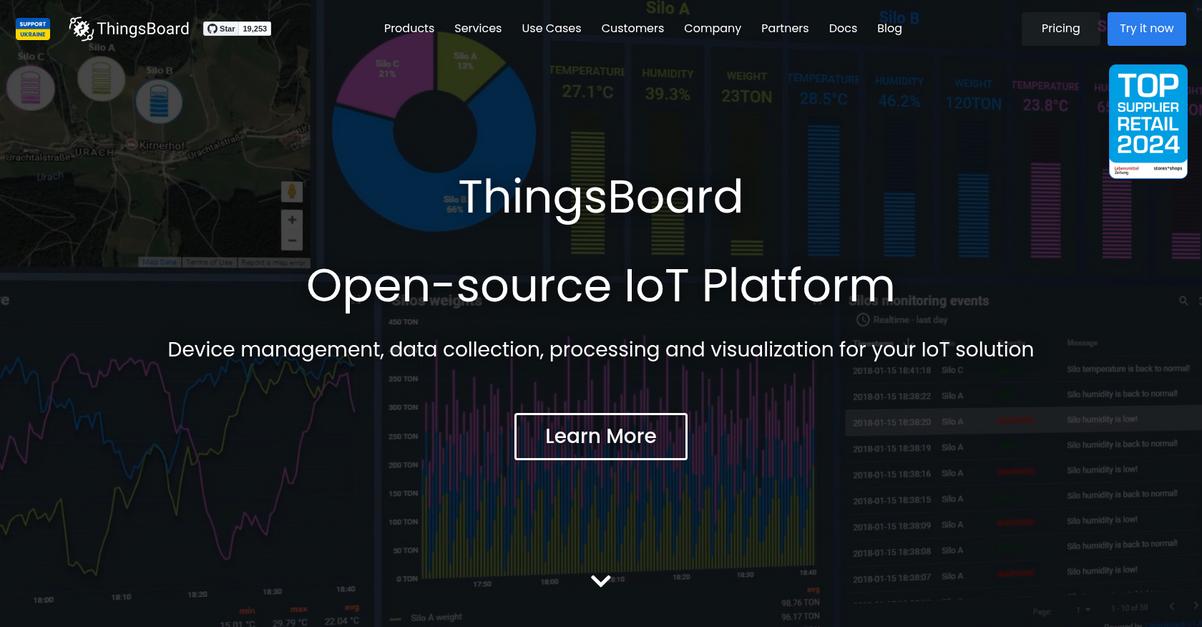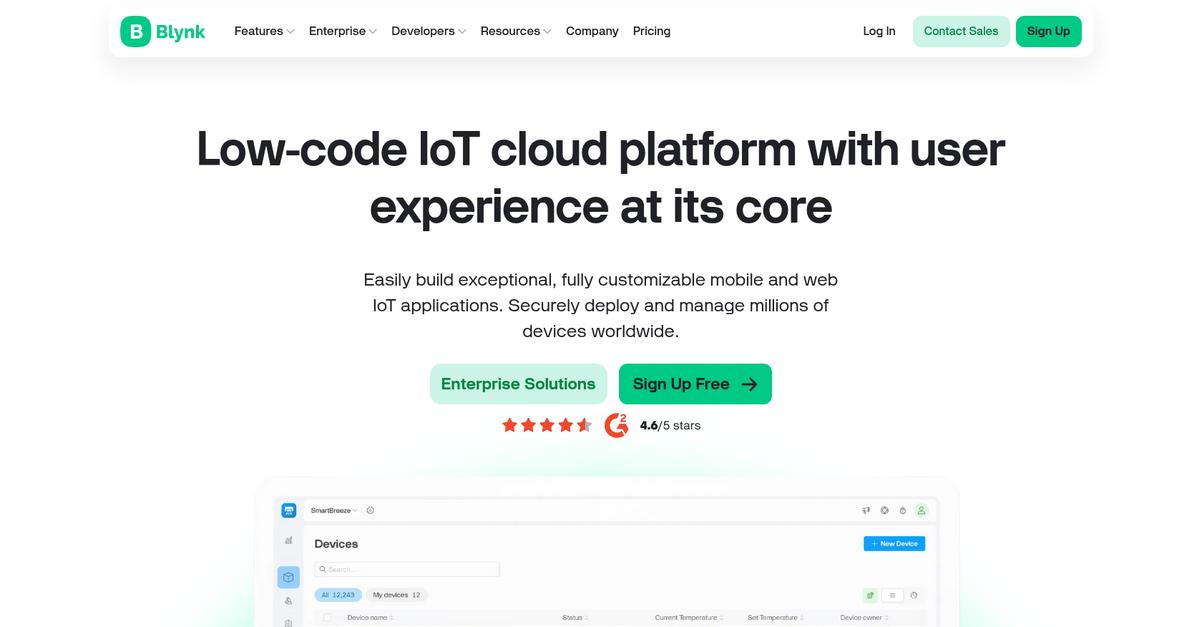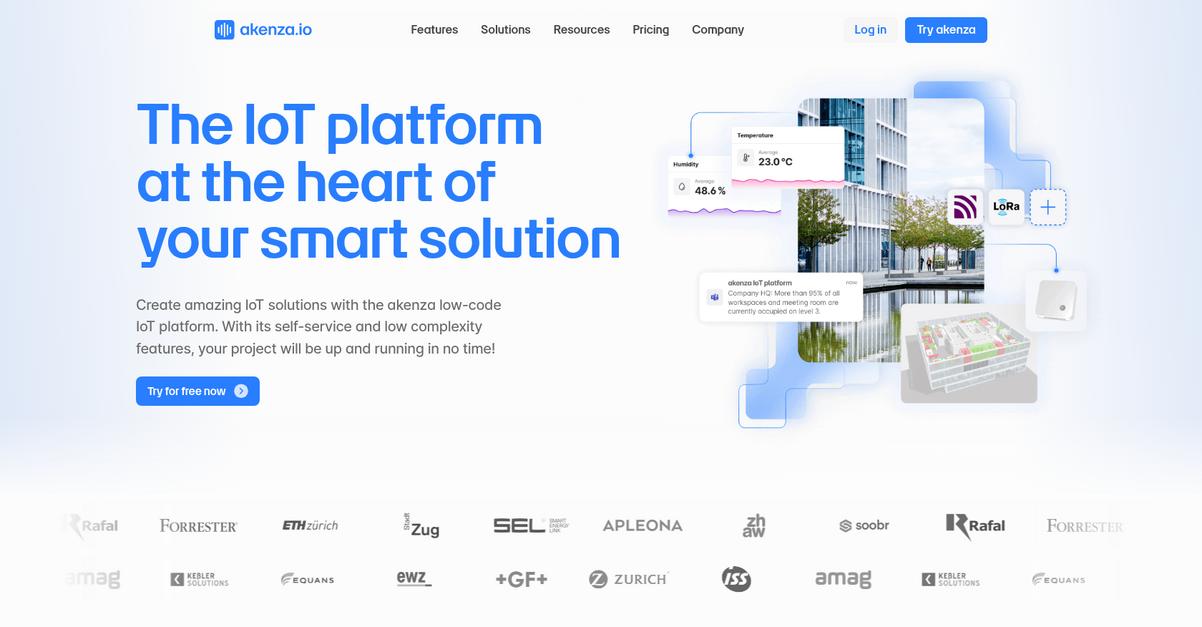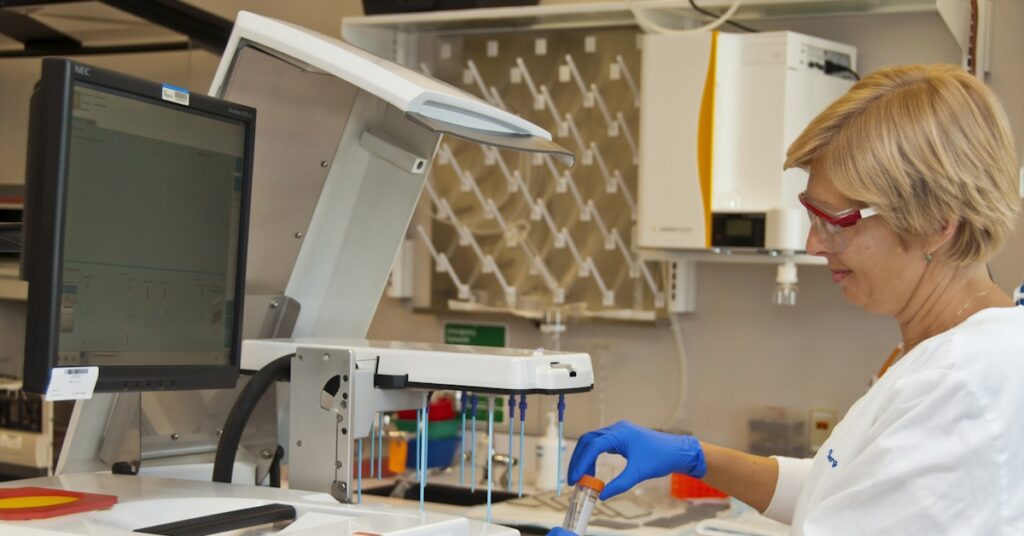Struggling to unify your IoT devices?
Your devices generate tons of data, but it’s siloed across different platforms. This makes getting a clear, real-time view of operations nearly impossible.
This disconnect creates huge operational gaps. The pressure to justify ROI on your tech stack only adds to the anxiety of making the wrong choice.
The market is flooded with options, all promising the world. This makes choosing a platform that actually solves your integration and scalability problems feel overwhelming and risky.
The right platform, however, can change this. It should deliver unified, actionable insights from a single dashboard, simplifying everything for your team.
In this guide, I’ll cut through the noise. I’m breaking down the best IoT software to help you unify your devices and unlock real-time analytics.
You’ll find solutions that integrate with your existing systems, improve efficiency, and support your business growth without the constant churn.
Let’s get started.
Quick Summary:
| # | Software | Rating | Best For |
|---|---|---|---|
| 1 | Amazon Web Services → | Large enterprises & automotive | |
| 2 | Microsoft Azure → | Enterprise-scale industrial ops | |
| 3 | Particle → | Operations managers & IT leads | |
| 4 | ThingsBoard → | Industrial & scalable setups | |
| 5 | Blynk → | Operations managers & IT leads |
1. Amazon Web Services

Struggling with fragmented device data and slow insights?
I know you want to unify your device management and data analytics to improve process automation. AWS IoT offers services to connect, manage, and analyze billions of devices.
This means you can accelerate innovation with a complete set of IoT services, moving quickly and saving money by securely managing everything from connectivity to analytics.
You’re looking for real-time insights.
AWS IoT directly addresses this by providing solutions that connect your devices and operate them at the edge. This includes services like AWS IoT Greengrass, which lets you build, deploy, and manage intelligent IoT applications at the edge.
Additionally, you can securely ingest and process video data at any scale using Amazon Kinesis Video Streams. Plus, AWS IoT ExpressLink helps you quickly transform any embedded device into an IoT–connected device with minimal design effort. The result is a unified dashboard for actionable insights, making your devices more intelligent with superior AI and ML integration for up to 25x better performance.
Unlock your IoT data and accelerate business growth.
Speaking of efficiency and important decision-making, my guide on best board meeting software covers tools for streamlining your executive sessions.
Key features:
- Comprehensive IoT Services: Connect and manage billions of devices, collecting, storing, and analyzing data for industrial, consumer, commercial, and automotive use cases, saving you time and effort.
- Secure & Scalable Infrastructure: Build innovative solutions on secure, proven, and elastic cloud infrastructure that scales to billions of devices, integrating with other AWS services.
- Advanced Analytics & AI/ML: Work with IoT data faster to extract value using tools like AWS IoT Analytics and create digital twins with AWS IoT TwinMaker, helping you make data-driven decisions.
Amazon Web Services features, pricing, & alternatives →
Verdict: If your organization needs a robust, scalable, and secure platform for device management and data analysis, AWS IoT is a strong contender for the best IoT software. Its ability to handle billions of devices and integrate AI/ML, as seen with customers like Volkswagen Group and iRobot, helps deliver measurable productivity gains.
2. Microsoft Azure

Is device interoperability slowing your operations?
Microsoft Azure IoT addresses this with features like Azure IoT Hub, designed to connect and manage billions of devices seamlessly. This means you can centralize control and gain insights across your entire device ecosystem.
Additionally, with Azure IoT Operations, you can transform physical operations, building a robust data foundation for AI. This enables crucial collaboration between IT and operational technology (OT) teams, ensuring your solutions are interoperable and scalable for future growth.
Gain control, unify your devices.
Here’s how Microsoft Azure helps you unify device management and unlock real-time insights. Their solution liberates data at the edge, securely manages cloud assets, and enables proactive decision-making across your enterprise. This reduces the burden of managing infrastructure, helping you innovate faster.
For instance, Azure Digital Twins allows you to build next-generation spatial intelligence solutions by replicating real physical spaces. You can also monitor equipment key parameters for condition monitoring, predict maintenance needs, and leverage mixed reality for enhanced service in real-time. Plus, real-time asset tracking and management capabilities mean you’re always informed.
The result is smooth adoption with measurable productivity gains and future-proof scalability.
While optimizing device data, you might also be keen on understanding user behavior. My guide on best product analytics software explores this in depth.
Key features:
- Unified Device Management: Connect, monitor, and control billions of IoT devices from edge to cloud, streamlining operations from a single control plane.
- Predictive Analytics & AI: Utilize Azure Digital Twins and AI capabilities for condition monitoring, predictive maintenance, and real-time asset tracking.
- Secure & Scalable Infrastructure: Secure your entire environment from chip to cloud with Microsoft Defender for IoT, building flexible and scalable solutions.
Microsoft Azure features, pricing, & alternatives →
Verdict: Microsoft Azure stands out as a best IoT software solution for enterprises seeking to unify device management and gain real-time insights. Its comprehensive features, including robust security with Microsoft Defender for IoT and advanced analytics capabilities like predictive maintenance, make it ideal for transforming physical operations and ensuring future-proof scalability, as highlighted by customers like Telefónica and SGS.
3. Particle

Struggling to unify your IoT devices and insights?
Particle provides application, edge, cloud, and network infrastructure, giving you full control over your connected solutions. This means you can overcome interoperability challenges and integrate various systems with ease.
You gain complete control over your devices, turning raw data into immediate actions and helpful insights. It helps streamline operations and boosts productivity.
Here’s how.
Particle makes it simple to manage your IoT fleet through a single portal. You can reliably deploy over-the-air software and model updates to any device, from microcontrollers to AI accelerators.
Additionally, its abstracted communications layer handles diverse radios like LTE, 5G, Wi-Fi, satellite, and LoRaWAN, meaning your connectivity just works across various environments. Plus, with robust security features and 250+ data integrations, you can feel confident your data is protected and actionable. The result is simplified deployment and enhanced system-wide control.
Unlock real-time insights from your devices.
While streamlining various systems, efficient contract lifecycle management is also vital for many businesses.
Key features:
- Comprehensive device management: Control and monitor your entire IoT fleet, from embedded intelligence on the edge to cloud infrastructure for data insights, all from a single pane of glass.
- Reliable connectivity and updates: Leverage multi-radio transport across LTE, 5G, Wi-Fi, satellite, and LoRaWAN, ensuring seamless over-the-air software and Edge ML model deployment to all devices.
- Actionable data infrastructure: Utilize real-time message processing, digital twins, serverless computing, and 250+ data integrations to turn raw machine data into immediate actions and valuable insights.
Particle features, pricing, & alternatives →
Verdict: Particle stands out as a best IoT software solution for operations managers and IT leads seeking unified device management and predictive analytics. Its robust edge-to-cloud infrastructure, reliable OTA updates, and extensive integrations help improve process automation and deliver actionable insights, addressing key pain points like implementation failure and demonstrating clear ROI.
4. ThingsBoard

Struggling with fragmented IoT device management?
ThingsBoard offers robust device connectivity and data collection capabilities, addressing common interoperability and scalability issues. This means you can unify all your IoT entities efficiently.
You can provision, monitor, and control your devices securely, defining relationships between devices, assets, and customers, ensuring comprehensive oversight and streamlined operations.
This empowers holistic real-time insights.
ThingsBoard solves this by enabling data collection, processing, visualization, and device management. You can collect and store telemetry data in a scalable, fault-tolerant way, using built-in or custom widgets to visualize it on flexible dashboards that can be shared with your customers. This provides real-time monitoring of industrial processes with SCADA, allowing you to design and oversee operations with full flexibility. Additionally, ThingsBoard supports microservices architecture for maximum scalability and fault-tolerance, ensuring your data is always safe. Plus, with its powerful rule engine, you can transform and normalize device data, raise alarms on events, and define complex notification chains, making your IoT solution truly proactive.
Unlock your IoT potential today.
If you’re also looking into specific facility solutions, my article on best long term care software covers comprehensive management options.
Key features:
- Comprehensive Device Management: Securely provision, monitor, and control IoT devices and assets, defining relationships for unified oversight and streamlined operations.
- Advanced Data Visualization: Collect and store telemetry data scalably, then visualize it using 30+ customizable widgets on flexible, shareable dashboards for real-time insights.
- Flexible Rule Engine: Process incoming device data with powerful rule chains to transform, normalize, raise alarms, and trigger notifications based on custom logic.
ThingsBoard features, pricing, & alternatives →
Verdict: ThingsBoard stands out as an excellent choice for best IoT software, offering robust device management, scalable data collection, and powerful visualization tools. Its fault-tolerant architecture and comprehensive rule engine ensure seamless integration and predictive analytics, helping your organization achieve significant productivity gains.
5. Blynk

Struggling with fragmented device management and data silos?
Blynk offers a robust low-code IoT platform, simplifying the creation and deployment of connected products. This means you can centralize control and gain real-time insights efficiently.
Their platform allows you to build custom mobile and web applications without coding, addressing your need for seamless integration and unified dashboards. You can manage your entire IoT lifecycle, from prototype to production.
This brings your devices into one cohesive ecosystem.
Blynk simplifies IoT complexity, letting you develop hardware while they cover the rest. Here’s how it works: you can build and publish iOS and Android apps using a no-code, drag-and-drop UI builder with over 50 customizable IoT elements. Additionally, the web console provides ready-made monitoring dashboards and a no-code dashboard builder for real-time control.
This platform supports various hardware and connectivity options, including WiFi, Cellular, and LoRaWAN, ensuring seamless integration with your existing infrastructure. Plus, Blynk’s secure and scalable cloud infrastructure handles data in real-time, stores historical data, and provides OTA updates, empowering predictive analytics and future-proof scalability. The result is simplified management and enhanced control.
You can launch powerful IoT products efficiently.
If you’re also looking into other specialized software, my article on best church management software covers solutions for religious organizations.
Key features:
- No-code mobile and web app builder: Easily design and deploy custom IoT applications with drag-and-drop simplicity for remote control and data visualization.
- Robust device connectivity and provisioning: Connect devices securely and quickly to your network using industry-leading protocols and versatile integration options, including WiFi and Cellular.
- Enterprise-grade cloud infrastructure: Leverage a secure, scalable cloud for real-time data processing, storage, and device management, ensuring reliable and efficient operations.
Blynk features, pricing, & alternatives →
Verdict: Blynk’s low-code approach, combined with its comprehensive features, makes it a strong contender as the best IoT software for operations managers and IT leads seeking streamlined device management. Its ability to create custom apps and dashboards rapidly, as demonstrated by clients like Raypak and Windmill achieving native mobile apps in days, addresses core challenges of interoperability and real-time insights.
6. akenza

Struggling to unify your IoT devices and insights?
akenza offers a low-code IoT platform with self-service features to get your projects up and running quickly. This means you can create amazing IoT solutions.
This platform helps you overcome decision-making paralysis by providing a straightforward solution to complex IoT challenges, ensuring your project is up and running in no time.
Here’s how to simplify your IoT journey.
akenza offers centralized device and connectivity management, eliminating the need to jump between multiple tools. This leads to smoother adoption.
Its worldwide LPWAN connectivity means you get global connectivity in one place, without separate accounts and contracts. This saves your team significant time and effort. Additionally, the extensive device type library allows you to register your devices in minutes, and built-in visualization tools with a dashboard composer help you make more out of your data.
Predictive analytics becomes a reality.
Beyond IoT solutions, understanding effective vendors management software can optimize all your business relationships.
Key features:
- Centralized management: Offers unified device and connectivity management, eliminating the need for multiple tools and simplifying your operations.
- Low-code platform: Provides a self-service, low-complexity environment that allows you to quickly build and deploy IoT solutions without extensive coding.
- Data visualization: Includes a built-in dashboard composer to help you effectively visualize and make more out of your collected IoT data.
akenza features, pricing, & alternatives →
Verdict: akenza stands out as a powerful and flexible solution, making it suitable for operations managers seeking the best IoT software to unify devices and unlock real-time insights, as demonstrated by ISS Switzerland saving four steps in device registration. Its low-code approach and centralized management alleviate common pain points like interoperability issues and slow deployment.
Conclusion
Ready to unify your connected devices?
I know choosing a platform is overwhelming. You need a solution that scales without creating more integration headaches for your enterprise.
The challenge is growing, with projections showing a need to manage 40 billion connected devices by 2030. This massive scale demands a solution that enables real-time analytics and streamlined security across your entire operational network.
So here is my final recommendation.
After reviewing all the options, AWS IoT is my top pick. It’s uniquely built to unify device management and unlock data analytics at any scale.
Its superior AI and ML integration, providing up to 25x better performance, accelerates innovation. For a truly future-proof platform, it’s the best IoT software.
For additional insights into streamlining your business, my analysis of conversational support software provides valuable perspectives.
I strongly suggest you create an AWS account to explore its powerful set of services and see how they fit your needs.
Accelerate your business growth today.






